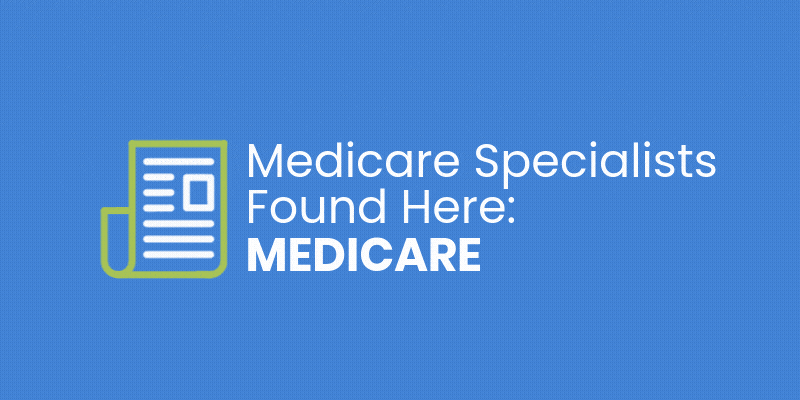
Medicare Part B is a crucial component of the Medicare program, providing coverage for medically necessary services like doctor visits, outpatient care, preventive services, and some home health care. Understanding Medicare Part B is essential for managing your healthcare in retirement and ensuring that you have adequate coverage for a broad range of medical needs.
What is Medicare Part B?
Medicare Part B, also known as “Medical Insurance,” is part of Original Medicare and covers a wide array of outpatient and preventive services. While Medicare Part A covers inpatient hospital services, Part B focuses on outpatient care, including visits to your doctor, laboratory tests, durable medical equipment (DME), and preventive care like flu shots and screenings.
Who is Eligible for Medicare Part B?
Eligibility for Medicare Part B typically mirrors that of Medicare Part A, but enrollment is separate and involves different considerations:
- Age 65 and Older: Most individuals qualify for Medicare Part B when they turn 65. Enrollment can be automatic if you’re already receiving Social Security or Railroad Retirement Board benefits.
- Under Age 65: Those under 65 who receive Social Security Disability Insurance (SSDI) for 24 months, or who have End-Stage Renal Disease (ESRD) or Amyotrophic Lateral Sclerosis (ALS), are also eligible for Medicare Part B.
What Does Medicare Part B Cover?
Medicare Part B covers two primary types of services: medically necessary services and preventive services.
- Medically Necessary Services: These are services or supplies needed to diagnose or treat a medical condition and that meet accepted standards of medical practice. This includes:
- Doctor Visits: Coverage for visits to your primary care physician or specialists.
- Outpatient Care: Services that don’t require hospital admission, such as X-rays, MRI scans, and minor surgeries.
- Durable Medical Equipment (DME): Equipment like wheelchairs, walkers, and oxygen equipment.
- Mental Health Services: Outpatient mental health care, including counseling and therapy.
- Preventive Services: Medicare Part B also covers preventive services to help maintain your health and detect illnesses early when treatment is most effective. These services include:
- Annual Wellness Visits: Routine check-ups and health risk assessments.
- Screenings: Tests for cancer, cardiovascular diseases, diabetes, and other conditions.
- Vaccinations: Immunizations like flu shots and pneumococcal vaccines.
Costs Associated with Medicare Part B
While Medicare Part B offers broad coverage, it is not without costs. Beneficiaries need to be aware of the following expenses:
- Monthly Premium: Most beneficiaries pay a standard monthly premium for Medicare Part B. In 2024, the standard premium is $174.70. However, premiums can be higher based on your income, as determined by the Income-Related Monthly Adjustment Amount (IRMAA).
- Annual Deductible: There is an annual deductible for Medicare Part B. In 2024, this deductible is $240. Once you meet this deductible, you typically pay 20% of the Medicare-approved amount for most doctor services, outpatient therapy, and durable medical equipment.
- Coinsurance and Copayments: After meeting the deductible, you usually pay a 20% coinsurance for most services, including doctor visits and outpatient services. Some preventive services are covered fully without any coinsurance or deductible if the provider accepts Medicare assignment.
How to Enroll in Medicare Part B
Enrolling in Medicare Part B can occur automatically or manually, depending on your situation:
- Automatic Enrollment: If you are receiving Social Security or Railroad Retirement Board benefits, you will be automatically enrolled in Medicare Part B when you turn 65. If you don’t want Part B, you must follow the instructions sent with your Medicare card to opt out.
- Manual Enrollment: If you are not receiving Social Security benefits, you must sign up for Medicare Part B during your initial enrollment period, which begins three months before you turn 65 and ends three months after the month you turn 65.
- Special Enrollment Period: If you or your spouse is currently employed and covered by a group health plan, you may delay enrolling in Medicare Part B without penalty. Once employment ends or the group health coverage is terminated, you will have an eight-month Special Enrollment Period to sign up for Medicare Part B.
Penalties for Late Enrollment in Medicare Part B
Failing to enroll in Medicare Part B when first eligible can result in a late enrollment penalty. This penalty is typically an additional 10% of the Part B premium for each full 12-month period you could have had Part B but didn’t sign up. This penalty is added to your monthly premium for as long as you have Medicare Part B.
Common Misconceptions About Medicare Part B
There are several misconceptions about Medicare Part B that can lead to confusion:
- Medicare Part B is Free: Unlike Medicare Part A, most people pay a premium for Medicare Part B. The amount varies based on income, and there is also an annual deductible and coinsurance costs to consider.
- Medicare Part B Covers All Medical Costs: While Medicare Part B covers a wide range of services, it does not cover everything. Services like dental care, vision exams, hearing aids, and long-term care are generally not covered. Many people choose to purchase additional coverage, such as Medigap or Medicare Advantage plans, to cover these gaps.
- No Need to Enroll if You Have Other Insurance: Even if you have other insurance, you may still need to enroll in Medicare Part B when you become eligible to avoid late penalties, especially if your other insurance is not considered “creditable coverage.”
Maximizing Your Medicare Part B Benefits
To make the most of Medicare Part B:
- Stay Informed: Keep up-to-date on the types of services covered and any changes to Medicare regulations that might affect your coverage.
- Use Preventive Services: Take full advantage of the preventive services covered by Medicare Part B to maintain your health and detect any issues early.
- Consider Supplemental Coverage: Evaluate Medigap policies or Medicare Advantage plans to help cover costs that Part B doesn’t pay for, such as deductibles, copayments, and services like dental and vision care.
Conclusion
Medicare Part B is an essential part of healthcare coverage for millions of Americans, covering a broad spectrum of outpatient services and preventive care. Understanding the coverage, costs, and enrollment options for Medicare Part B can help beneficiaries make informed decisions and manage their healthcare more effectively in retirement. Staying proactive and regularly reviewing your Medicare options can ensure you receive the care you need while minimizing out-of-pocket expenses.
Seeking Personalized Guidance?
If you’re looking for tailored advice, reach out to a financial professional. Visit our “Find a Medicare Specialist” section to connect with an expert directly. For a personal referral for your first appointment, call us at 877.476.9723 or contact us here to schedule an appointment with an independent, trusted, and licensed Medicare specialist.
🧑💼 Authored by Brent Meyer, founder and president of SafeMoney.com, with over 20 years of experience in retirement planning and annuities. Discover more about my extensive background and expertise here. I am not a Medicare specialist. The information provided in this article is based on research and should not be considered professional advice. For personalized Medicare guidance, please consult a licensed Medicare specialist or financial advisor.
Educational Purposes Only
The Medicare information provided on this website is for educational purposes only and does not constitute marketing, solicitation, or endorsement of any specific Medicare plan, insurance product, or service. This content is intended solely to help individuals better understand Medicare, including general coverage options, eligibility requirements, and enrollment processes.
This website is not designed to influence any individual’s decision regarding their Medicare plan selection. It does not recommend or promote any particular Medicare Advantage, Medicare Part D, or Medigap plan. For comprehensive, personalized information about Medicare options, beneficiaries are encouraged to consult the official Medicare website (www.medicare.gov) or contact Medicare directly at 1-800-MEDICARE.
This educational content is not affiliated with, approved by, or endorsed by the Centers for Medicare & Medicaid Services (CMS) or any other government agency. The information provided is subject to change, and individuals should verify all information directly with CMS or a licensed Medicare advisor.








